The Moondrop Aria 2 build on their predecessor’s success, but the new market reality might prove too much.
- Bulletproof build quality
- Great mids
- Coherent sound
- Great dynamics
- High-quality cable
- Upper mids can get shouty
- Technical performance only average
- Heavy ear shells can get uncomfortable
- Stock tips reduce clarity
The original Moondrop Aria were released in 2021, and at the time, they made waves in the affordable IEM landscape. For one, they made the more costly Moondrop Starfield irrelevant and gave an affordable entry point into the IEM game for those looking for a warmer sound signature.
The black Aria were also my first foray into modern IEMs. Before that, I had grown disappointed with IEMs as the Etymotic ER4P’s diffuse field tuning didn’t work for me, and the UE TripleFi 10 felt like a disjointed mess compared to most full-size headphones at the time.
I bought the Aria for my lovely lady and was floored.
The all-new Aria 2 offer a better build that wouldn’t be out of place in IEMs ten times the price. The sound? They don’t stray far from the original tuning with less ear-gain.
But it’s not all sunshine and rainbows, so read on to find out more!
Unboxing and First Impression
Design and Build
The Aria 2 are built like a tank and will retain their good looks for a long time.
The main issue with the original Moondrop Aria was that the black paint would eventually chip off. Other than that, they felt well-built with cast metal shells. The Aria 2 do away with fragile paint and proudly present a bare cast-steel shell with a sand-blasted matte finish.
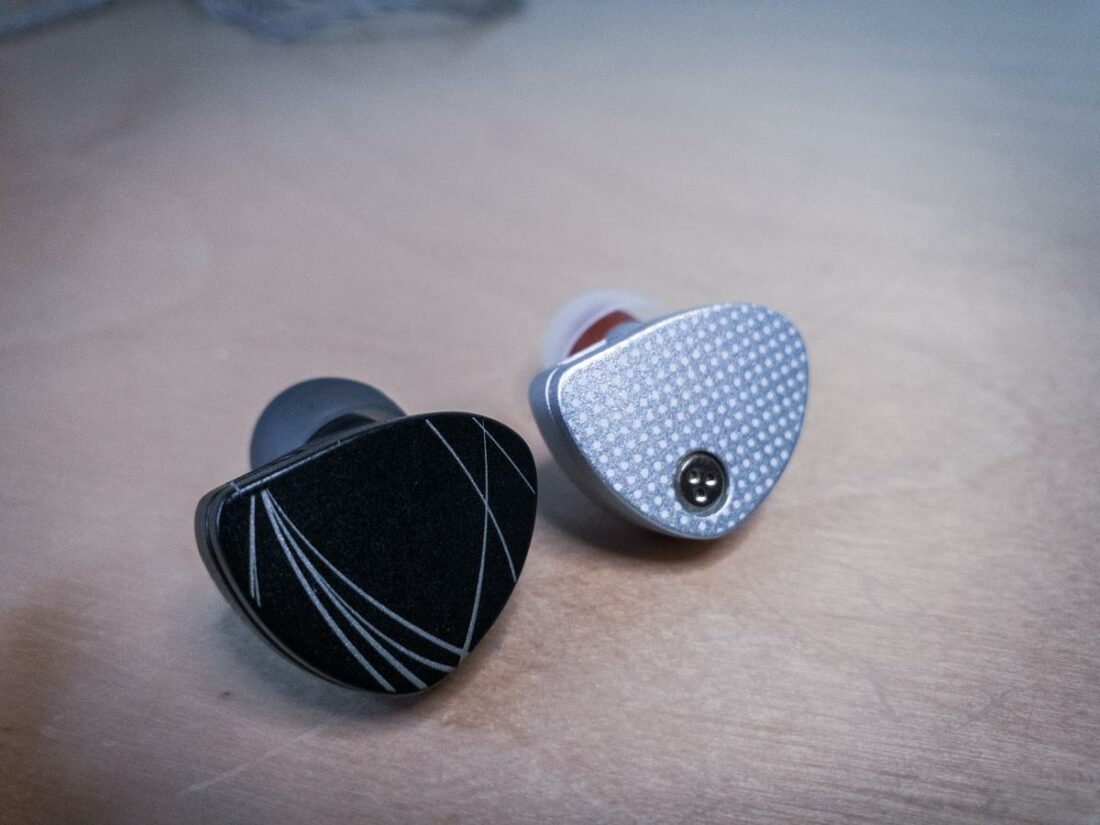
On the faceplate, the Aria 2 present a nice laser-etched dot pattern reminiscent of the Moondrop Para. There’s also a brass bolt that could be removed but requires a strange pattern for the driver to grab onto. I like that the sand-blasted finish makes the Aria 2 impervious to greasy fingerprints.
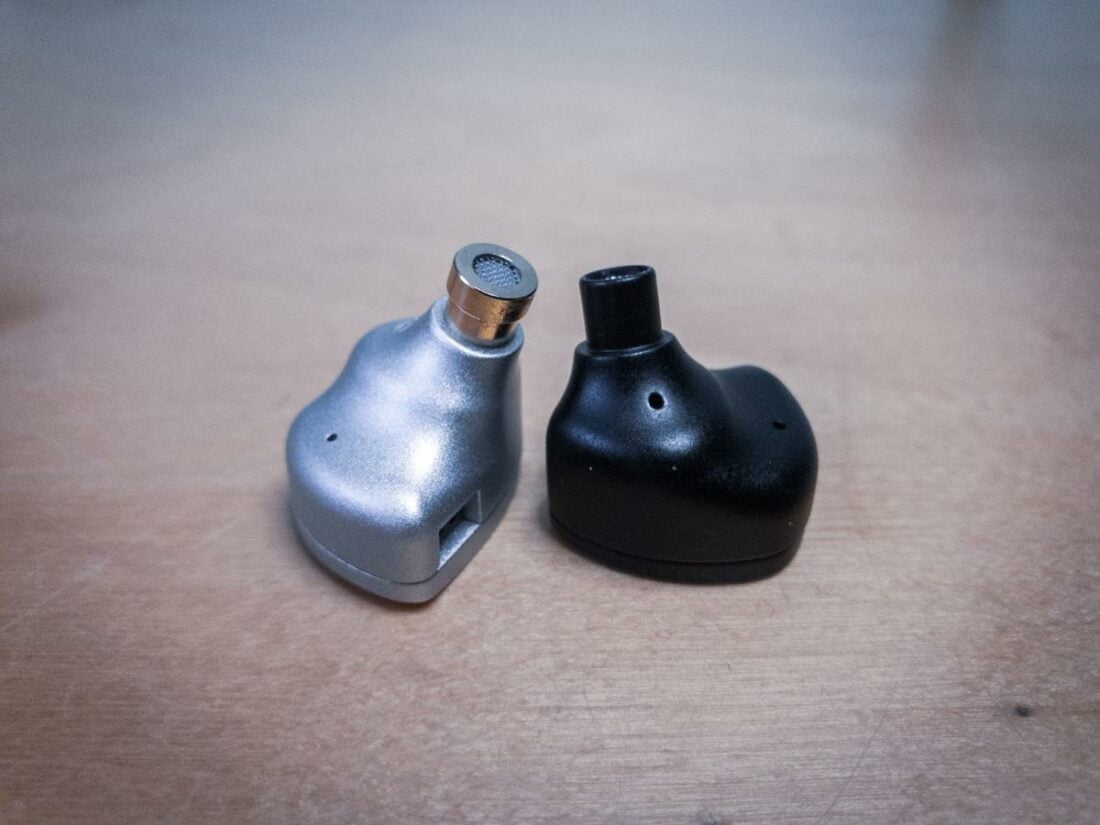
The ear-facing side has two vent openings, with the one closest to the nozzle having a machined flare to aid airflow. The nozzles themselves are also made out of brass and are screw-fit. They can be easily removed to access the inner filters. The tips have a retaining lip, so ear tips hold very well.
Cable
The stock cable on the Aria 2 is a pleasant surprise, if a little excessive.
I still remember the stock cord included with the original Aria – fairly practical but nothing to write home about. As for the new one, there is plenty to write about it! Looks-wise, it’s almost on par with the cables that come with kilo-buck IEMs. Moondrop doesn’t explicitly tell what the conductor material is, only that the cable is “hybrid.”
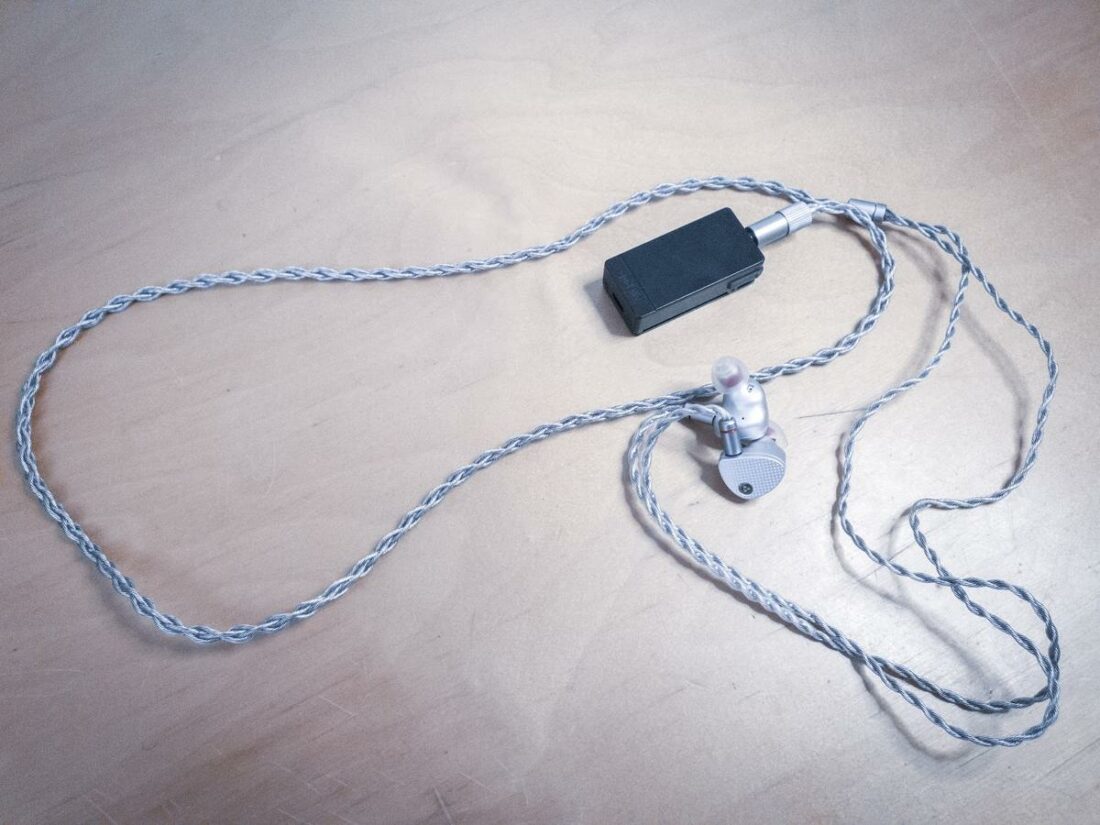
Rarely seen at this price point is the inclusion of swappable jacks, which use a 4-pin connector supporting 3.5mm TRS and 4.4mm balanced ends. It’s a nice-to-have with a trade-off that the extra mating surface of the 4-pin will make the cable more electrically resistant than a soldered connector.
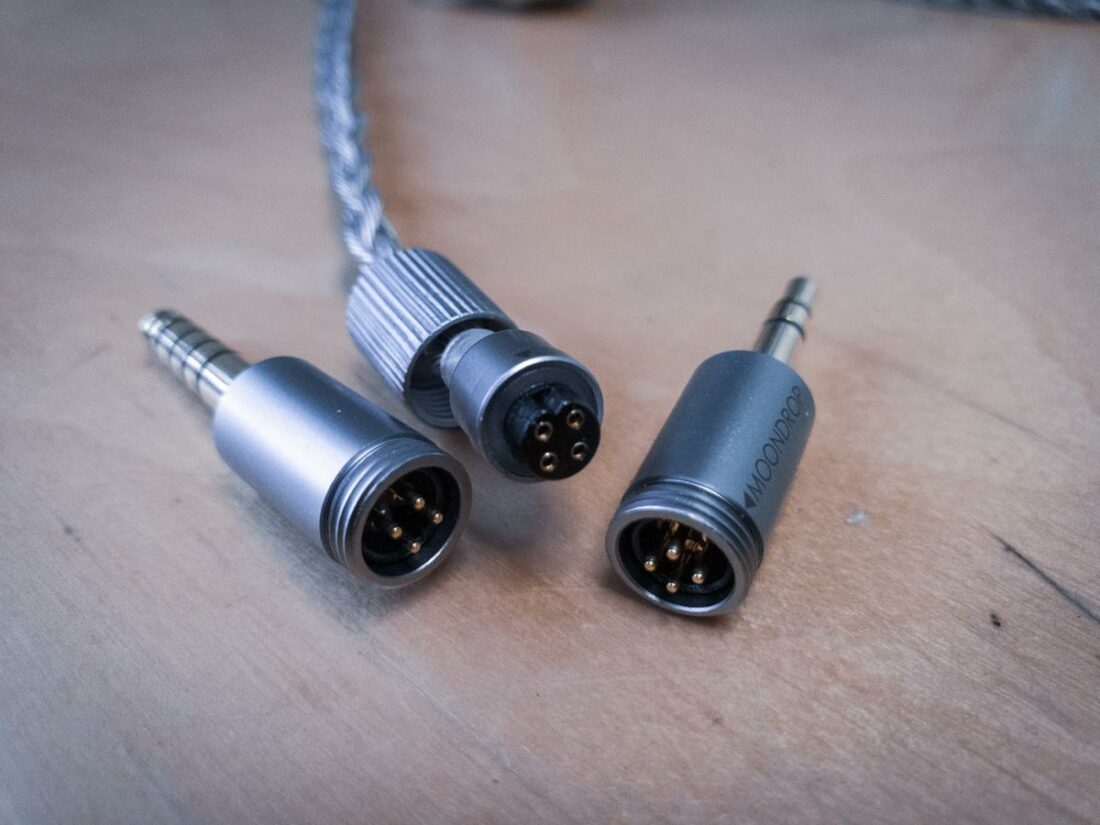
Mechanically, I have no qualms about the stock cable – it has my favorite 1.2m length and very little microphonics when used on the go.
Comfort
While the Aria 2 earshells’ general shape agrees with my concha, the proverbial elephant in the room is weight.
12 grams per shell is a lot!
A regular acrylic shell of a multi-driver IEM usually weighs half that. In time, the Aria 2 shells will develop pressure hot points.
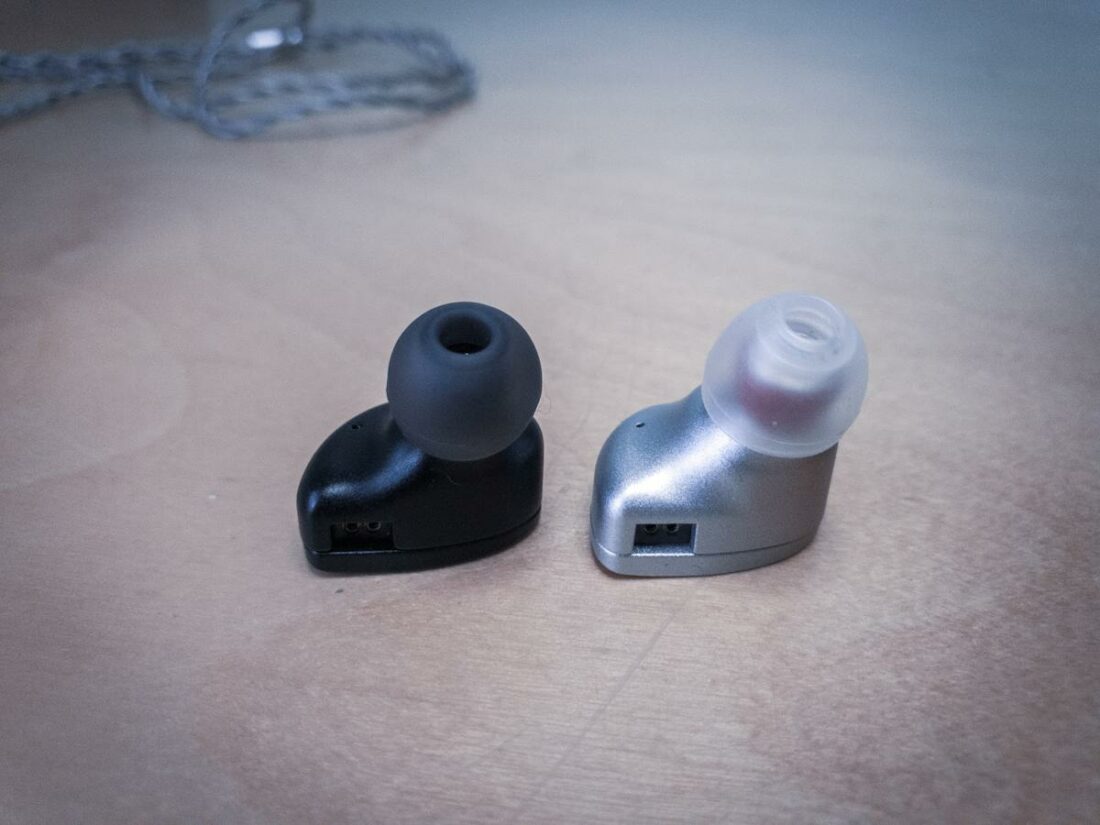
The nozzle diameter has also grown since the original Aria. At the widest point, it’s a hair under 6mm, which puts it squarely in the chunky camp. The shell is also a bit taller, making it stick outside the ear more than the original.
Under the Hood
The Moondrop Aria 2 keeps it simple and uses a single 10mm dynamic driver.
In the double-ported metal shell, we find a single 10mm dynamic driver that takes care of the audible spectrum. According to Moondrop, the diaphragm has a titanium nitride ceramic coating. It should help keep the diaphragm in shape at higher frequencies.
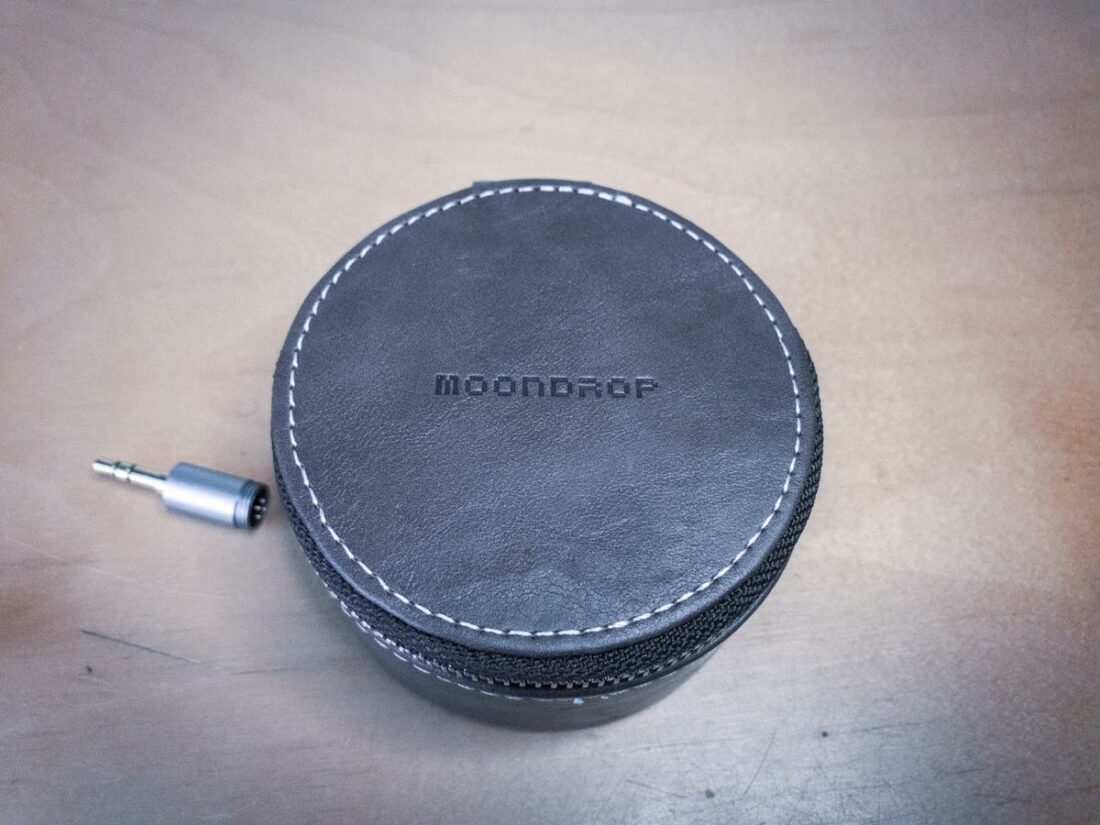
How Do the Moondrop Aria Sound?
With its 107.2 dB/mW efficiency and 33 ohm impedance, the Aria 2 are a pretty benign load for most amplifiers. Just about every output will be able to get them to high SPL, and they’re not voltage-sensitive enough to incur noise issues. With that said, I can detect improvements by going to higher-quality setups.
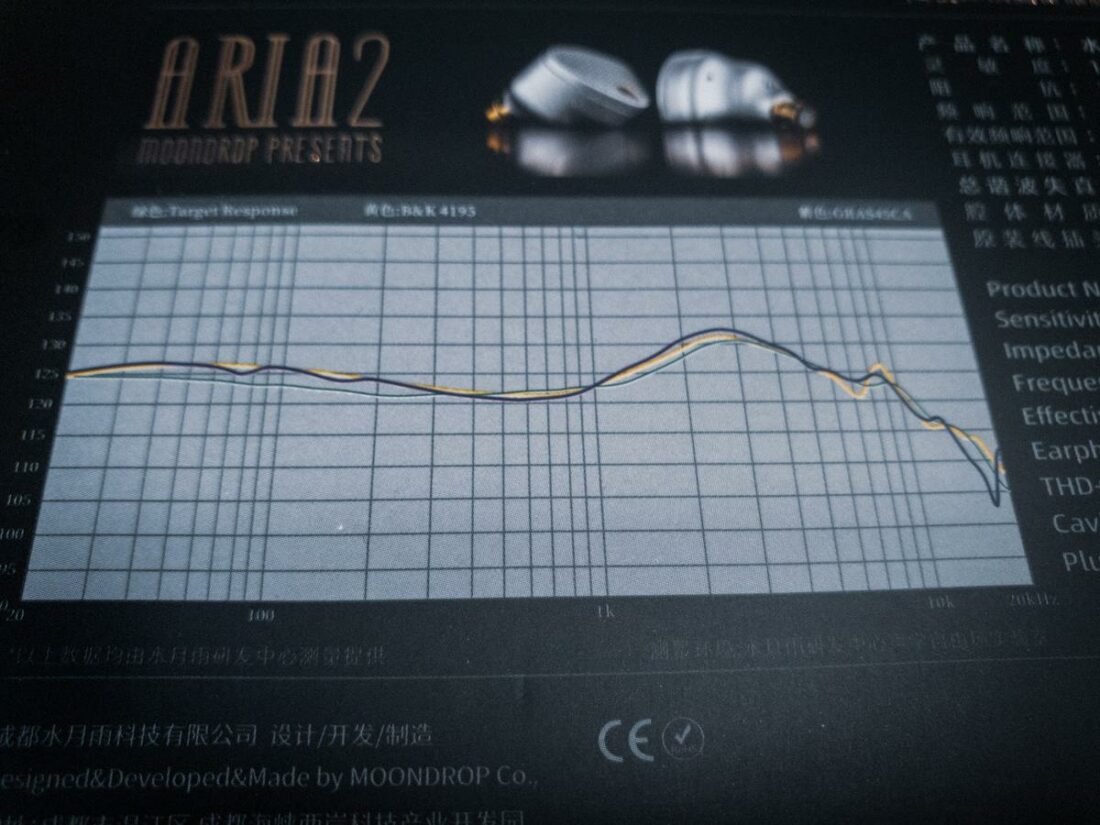
The overall tuning of the Moondrop Aria 2 remains warm-neutral. I am very pleased with how Moondrop did it, as I’m starting to feel like Harman-like tunings don’t have enough midbass. It does make the Aria 2 a more fun than informative listening experience.
Bass
The low-end tuning of the Aria 2 favors mid-bass instead of sub-bass.
And I like it!
The Aria 2 have further cemented my view that most of IEMs these days that follow common tuning targets seem to lack mid-bass. They sound more informative and rely on the sub-bass shelf to deliver impact.
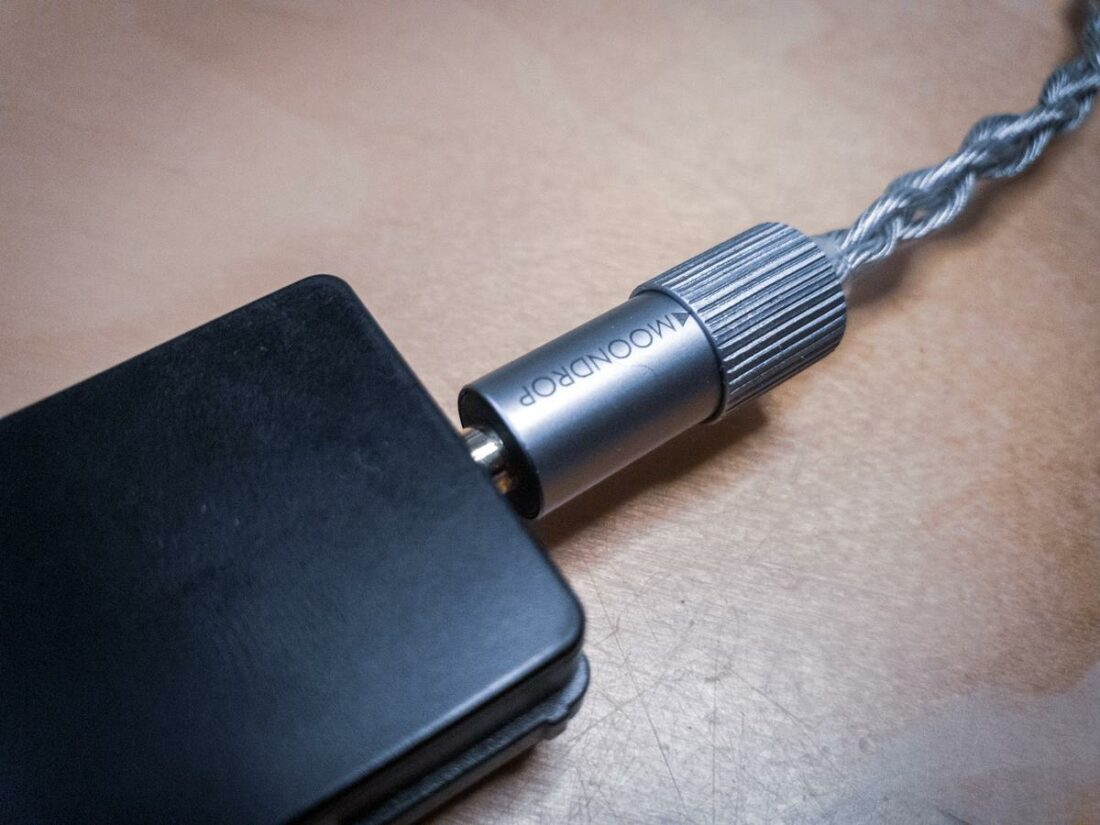
That’s not to say that anything is missing in the lower registers. Fire up Moderat or Weval, and plenty happens down low when the recording calls for it. It’s just that IEMs with dedicated subwoofers have cleaner sub-bass.
Midrange
As with most single-driver IEMs, coherence best describes the midrange.
The main draw of the Aria 2 is midrange warmth, lower-mid impact, and the inherent coherence of single-driver IEMs. While it’s true that the magic from the superb resolution of higher-end offerings is missing, I don’t seem to miss anything important from most recordings.
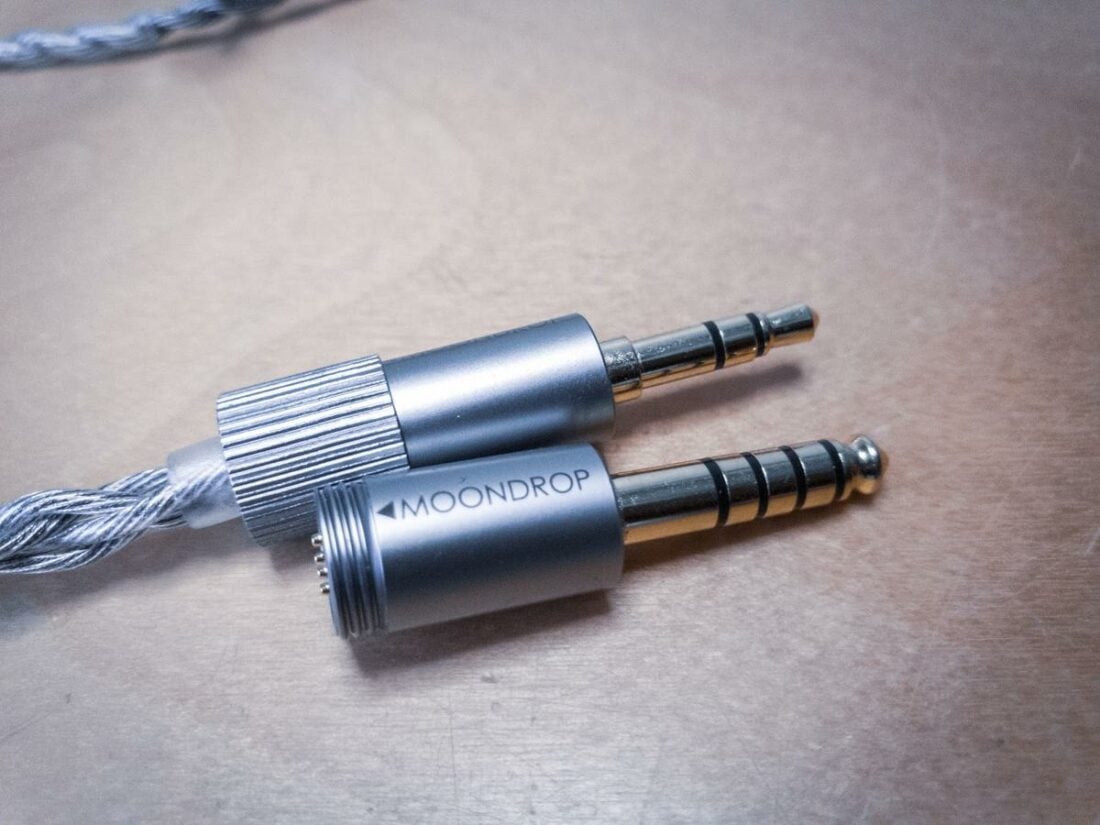
With super delicate vocal recordings, the Aria 2 don’t make me pause and go “wow” as I marvel at the details I was missing with other IEMs. It was more that I marveled at how fun these recordings sound with these IEMs.
Treble
A popular critique of the original Aria was the lack of treble extension. I agree to some extent.
The Aria 2 don’t seem to lack treble extension as much as treble clarity.
This also makes imaging a bit more nebulous than on other IEMs.
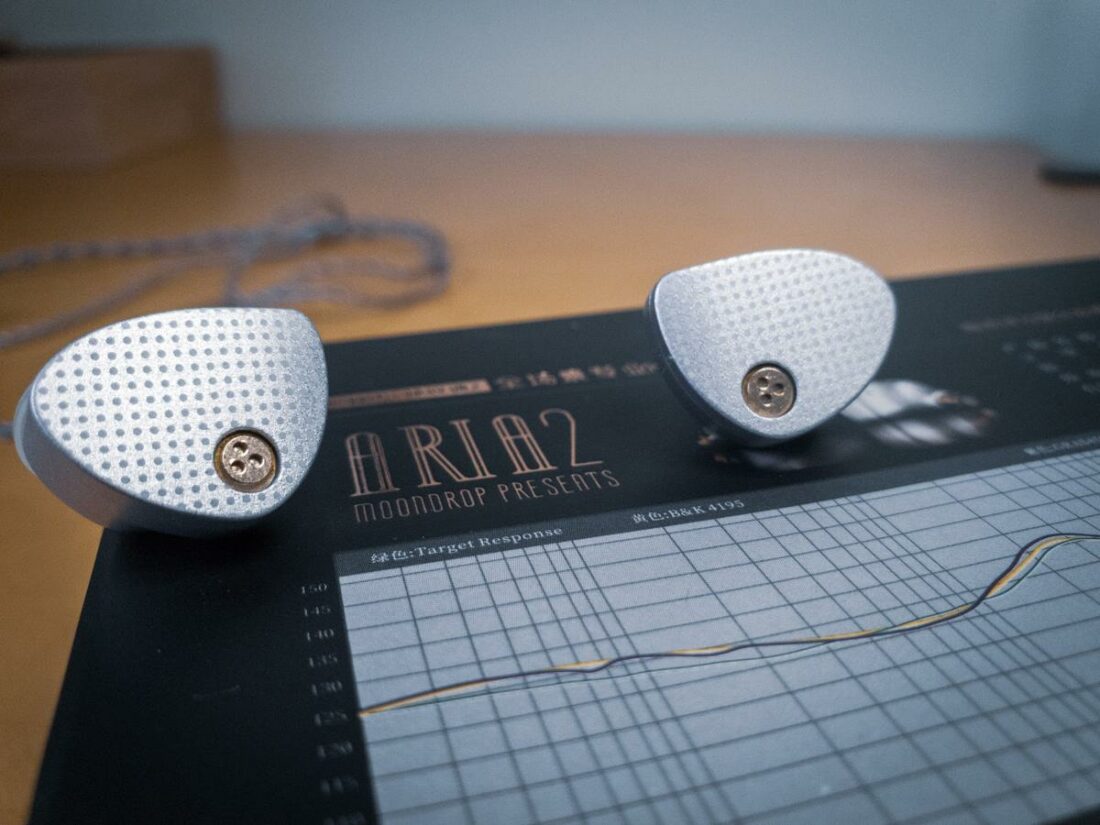
I suspect that the main culprit behind this isn’t the IEMs themselves as much as the stock tips. The treble clarity immediately improved when I swapped them out to Spinfit CP-100. Again – other balanced armature IEMs still surpass the Aria 2 in this regard, but less so with these ear tips.
Comparisons
Compared to the original Aria, the successor only builds on previous success. Unless you’re particularly sensitive to larger nozzles, the Aria 2 are the clearly better buy.
The real issue is that since the introduction of the original Aria in 2021, the market has become much more saturated.
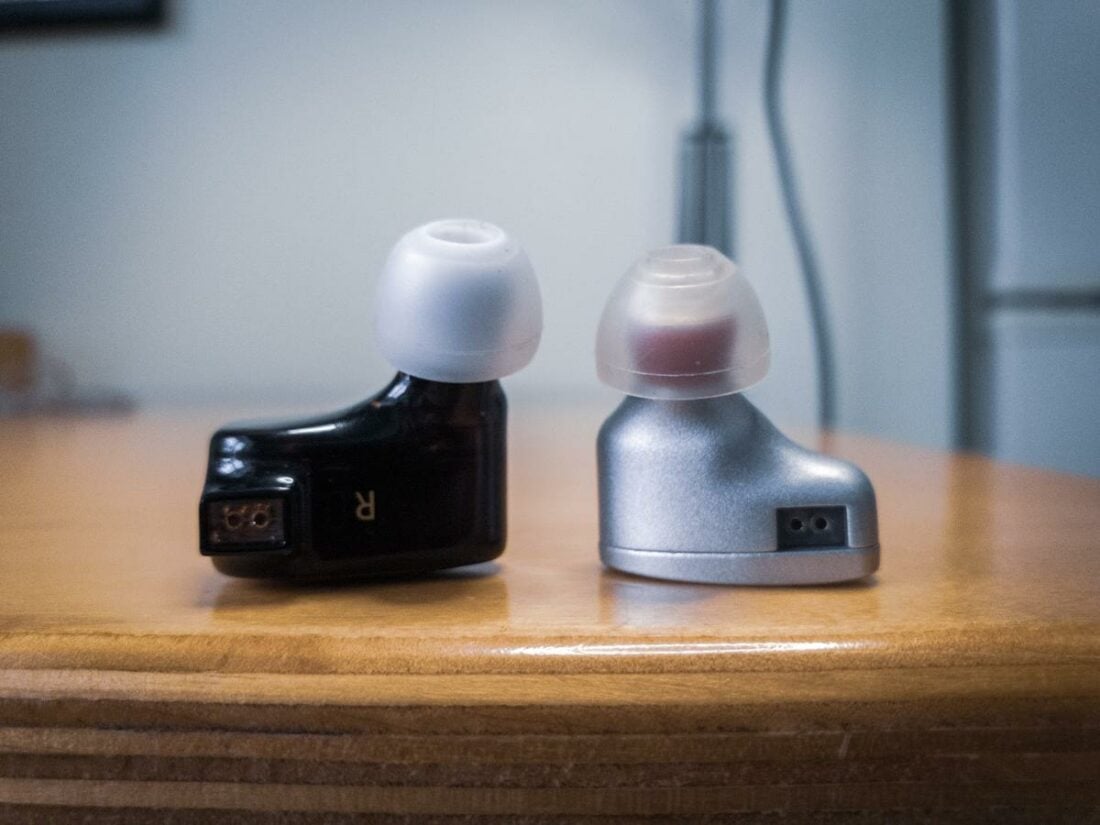
The usual suspects from Truthear and Simgot are the main competition for the Aria 2. I compared them directly to the Truthear ZERO: RED, and the Aria 2 are more different than outright better. The ZERO: RED feel more technically capable, with more clarity in the mids and highs.
The overall build is where the Aria 2 trounce the ZERO: RED, and their more upper-bass/lower-mid emphasis make most recordings sound more energetic and punchy.
Where to Buy
Who Should Buy This?
First off, let’s start with who shouldn’t buy them. If you already have decent sub-100 dollar IEMs, the Aria 2 probably won’t rock your world. That is unless you have a Harman-tuned pair that you absolutely hate. Then go ahead, and the Aria 2 will likely be right up your alley.
The other crowd who might be unimpressed with the Aria 2 will be the audio pixel-peepers. I consider the Aria 2 acceptable at best in most technical performance departments. That said, a good amount of clarity can be gained by swapping out the stock tips for Spinfit CP-100.
Final Thoughts
The original Moondrop Aria were a shocker to many – decently capable single-driver IEMs with a pleasant stock tuning. The Aria 2 do all that again but with some nice improvements. What makes the choice less obvious is the rest of the IEM market, which has also evolved in the last three years.
I think the Moondrop Aria 2 will be the perfect companion pair to more analytical IEMs or a very nice entry into the high-performance IEM scene for a beginner. Should you be looking for a gift, they are a great option because their strengths will be readily appreciated by just about any listener out there. And they look gorgeous!
What’s in the Box?
- Aria 2 IEMs
- 1.2m cable
- 3.5mm jack
- 4.4mm jack
- Silicone ear tips (S/M/L)
- Storage case
- User manual
Technical Specifications
- Form: IEM
- Driver: 1x ceramic-coated dynamic driver
- Impedance (Ohm): 33 Ohms
- Sensitivity (dB): 107.2 dB/mW
- Weight (g): 12g per side
- Frequency Response (Hz): 16 Hz – 22 kHz
- Removable Cable: Y
- Source Jack: 3.5mm and 4.4mm
- Cup/Shell Jack: 0.78mm 2-pin
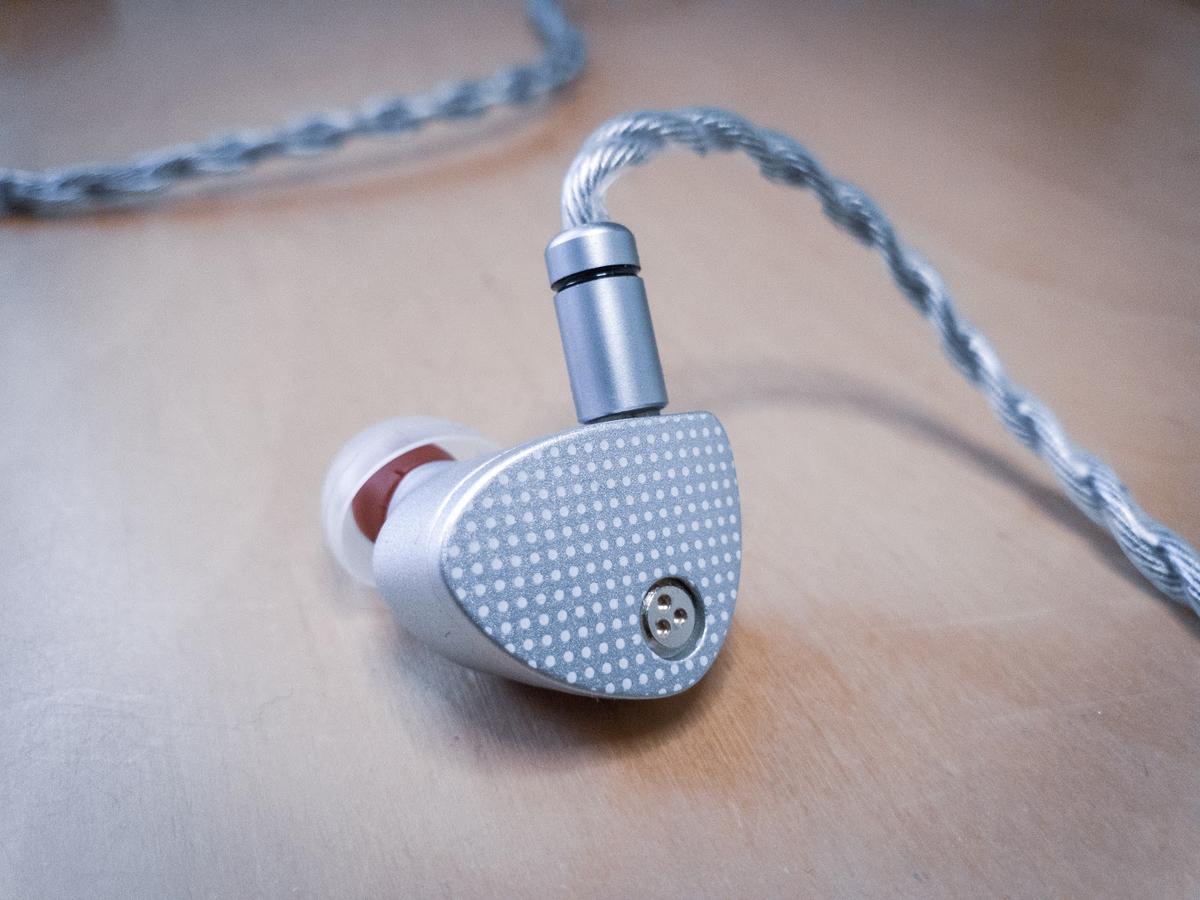
I’m sorry but calling these warm and neutral is just misleading. “They sound like a tin can…” Someone wrote this expression on amazon and I didn’t want to believe it untill I got them. Extremely high treble makes these very hard to listen to at normal levels (after 20 min you feel pain and after two hours I began losing hearing in one ear… pure torture). Even when you try to eq them they have some really weird distortions. Overall they were very shouty with very present/harsh sibilance and hisiness. I had, amongst others, shure 535 iem for 2 years which are neutral to the bone and aria 2 is for shure not neutral even by a mile… I also have dt 700 pro x and even these have half as much treble and “intensity”…. Like I can not comprehend how you can call these “warm” and “neutral”.
Strange, I couldn’t detect anything too wrong up top with the Aria 2. Try to either return or exchange them as there might be a problem.
P.S. What’s you neutrality reference in IEMs?